Below is a network displaying the connections between the topics/keywords and related poems by tile. It can also be used to discover the connections that two or more poems share.
Poem titles are colored with red, on the left. On the right, Tags are in blue, Keywords in Pink, and words that are both are colored with purple. The connecting lines are colored from yellow to dark purple in accordance with the "Edge Betweenness" — the number of the "steps" it takes to get from one node to another.
Here are some examples to help better explain the way to use and interpet these kinds of networks:
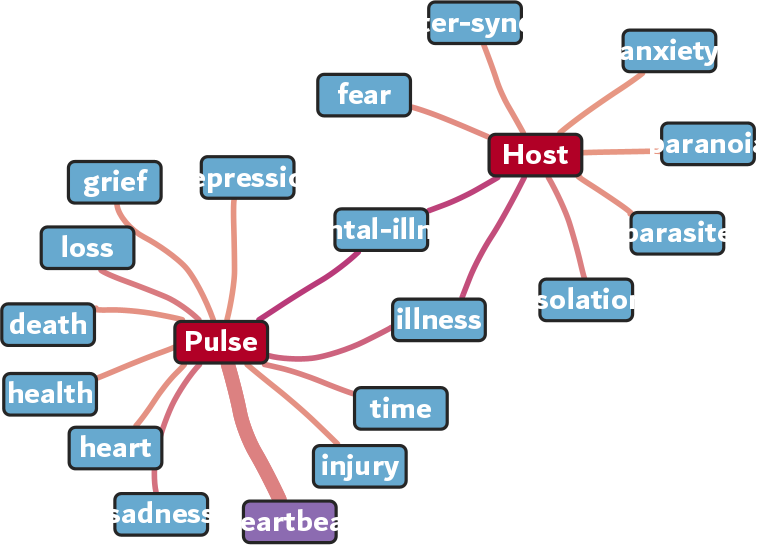
In the above sub-network, we can see how the two poems Pulse and Host, both very gory and thematically dark poems, are connected through the themes of mental and physical illness.
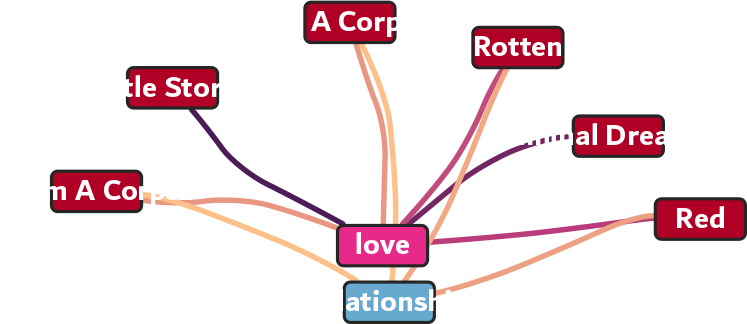
And for this one explores the ways these poems are all related to one another via the two themes of relationships and love.
It's so cool to be able to visually see the relationships between different poems!
My top 10 most-used words!
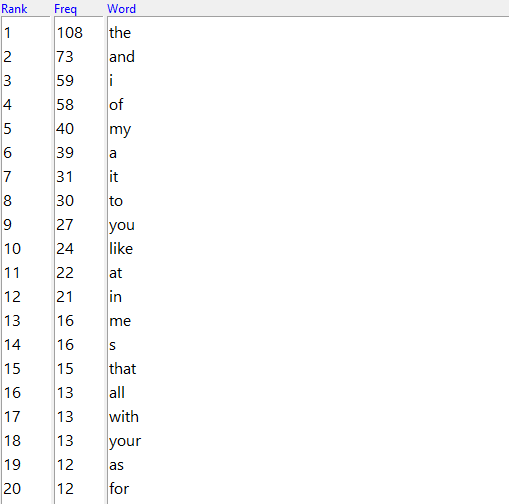
Hmmm... Not super enlightening. That's what word counts tend to look like, and it's why's they're not very useful in isolation. The most insightful piece of information that we can gather from this is something I mentioned in a blog post as I was first conducting this kind of analysis: I tend to use the words "I" and "me" a LOT in my works. Makes sense, given that most of my poems are written from my own point of view!
But, if we scroll down just a bit, we'll find a few more interesting entries:

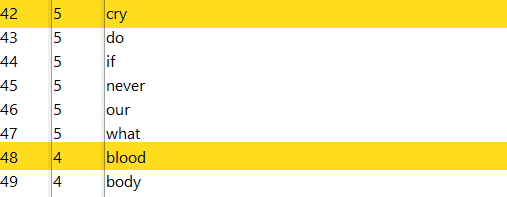
That's more like it! We can see some more intriguing words I tend to use a lot in my poems like: heartbeat, eyes, cry, and blood! How fun.
To get a better context for these word counts, we can use N-Grams.
N-Grams are continous sections of text (usually a few words in a sequence) that can be very illuminating in text analysis, as they reveal what phrases/combinations of words are most common in a work.
My top 20 N-Grams are:
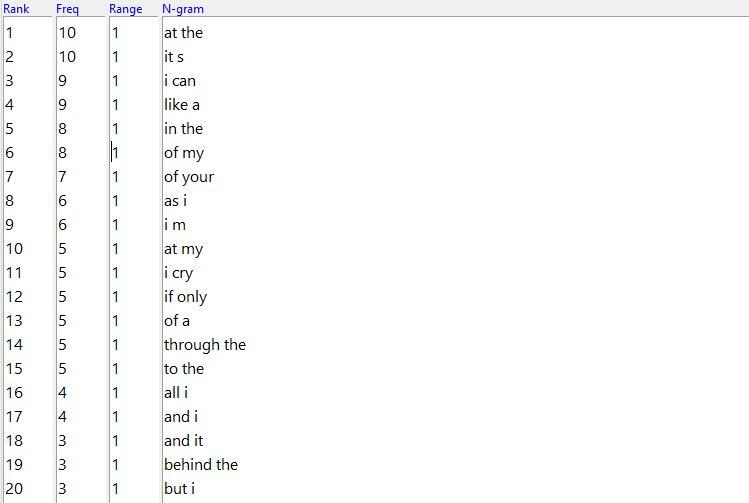
Unlike with word counts, we can already see some interesting patterns. First there's "like a," my 4th most common N-Gram, obviously an product of the fact that this is poetry, thus heavy on the metaphors and similies.
To make this analysis even more illuminating, we can bring in confordence plots, which will show us even more text that surrounds these N-Grams/words.
Taking a closer look at the concordence plot for "I" to get a better understand how exactly it gets used most frequently:

Instead of focusing on action (I do, I think, I go), my writing tends to skew towards emotion and sensation (I ache, I can feel/sense/see/hear).
We can use concordence plots of simimlar N-Grams ("of my" and "of your") to see if there's any contrast between them:


Hmm.. Not much. I use "your" and "you" much like a I use the words "my" and "I." This is still and interesting and illuminating find, though! It means that even through these complex and harsh topics, even when discussing abuse and toxic relationships, I humanize and establish empathy with the figure I (or my poems) speak to.
Overall, from these insights, you can see that I have an intense focus on emotion, connection, and expressing negative mental states such as anxiety and stress. I rely on gory imagery to create a dark atmosphere and further the tones of expression by using those images as symbols/metaphors.